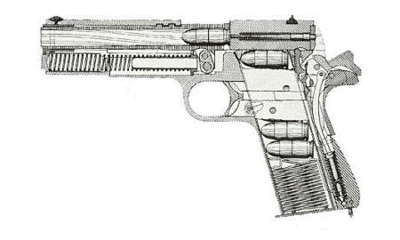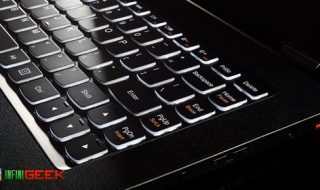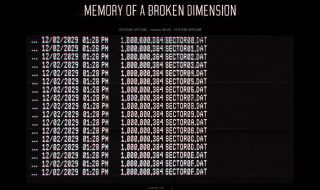
To some, firearms may appear to be a crude form of weaponry that the user only needs to “point and click” in order to use. Though most models are fairly self explanatory in function, there is a lot going on inside the weapon that allows for such a straightforward response to occur. Here is a breakdown of the science and physics behind different firearms and the components that make the “fire” in a firearm happen. This is especially important if you’re building your own firearm using 80 lowers from this site: https://www.80percentarms.com/80-lowers/.
Function
Animation of a 1911 pistol’s operation
Most every modern firearm works on the same premise. They project ammunition through a cylinder barrel and allow for loading and unloading of the gun. The trigger component signals the firing pin to strike the rear of the bullet or cartridge, which causes an explosive charge, igniting the powder within the casing, forcing the bullet forward through the barrel at a rate of between 2,000 to 3,000 feet per second, depending on the amount of granular powder within the shell.
Types of Guns
Shotgun
History of the Shotgun
The shotgun has been in use since the early 1600s and is one of the earliest and most popular models of firearms. In 1873, the first version of the two-barrel shotgun surfaced, and in 1904, the pump-action, hammerless shotgun was produced and became wildly popular among firearm enthusiasts. Even WWI soldiers came to prefer their shotguns to their sidearms in the trenches, resulting in the common “trench gun” nickname for the pump action shotgun, and has since become a staple in the military firearm arsenal. Modern shotguns vary from other firearms in several ways, mainly in the stock of the weapon. The stock, or butt, of the shotgun allows the user to steady and balance the firearm. Most classic shotguns have a wood stock, though tactical models are made of synthetic materials, while other models have a folding stock. When equipped with a pistol grip, shotguns can be used more like a handgun than a traditional model.
Rifle
U.S. Military Rifles since 1776
The origins of the rifle are shrouded in mystery, but the first recognized rifle was the Winchester in 1873. Rifles have a variety of actions. The beauty of the single action is that it is almost impossible to jam, which is why snipers tend to go with bolt action rifles. Some rifles are pump-action, like the .22. Lever-action rifles are popular since they do not subscribe to be right or left handed, so a lever-action rifle can be fired equally well by a shooter of either hand dominance.
They also fire faster and are shorter than a bolt-action rifle, making them more effective shooters on horseback, which is probably why wild west frontiersmen preferred the Winchester lever-action rifles. The pump-action keeps all of the bullets in a single file line. Semi-automatic action and fully automatic action rifles require a clip, cartridge or magazine, so they can fire more rounds quickly.
Handgun
The Glock Pistol: Why So Popular?
Revolvers have a cylindrical barrel that holds the shells, usually a maximum capacity of six to eight. Revolvers are either single or double action. The hammer needs to be manually cocked each time with single action (think of the old western gunslingers using their opposite hand to engage the hammer with each shot) and double action can be fired without pulling back the hammer each time. Pistols are usually semi-automatic with a magazine or clip.
Specialty Guns
How to Make an Airsoft Machine Gun from a Soda Bottle
BB, pellet, paintball and airsoft guns are less powerful versions of guns, but work on some of the same principles that rifles do. They are generally single, spring (single, lever action) or pump action, as is the case in airsoft guns, in which the pump compresses air. The more pumps the more power behind the shot. Most pellet guns and airsoft guns are CO2 powered. Pellets are bigger than BBs, so they have a little more heft. Airlift guns use a plastic projectile, a small round, colorful plastic that is lightweight and non-lethal. Many specialty guns look so real that several are manufactured with orange barrel tips to indicate that it is a non-lethal replica so law enforcement can quickly tell the difference.
Firearms may appear to be rudimentary “point and shoot” weapons, but within these devices there is a lot of science. Each component serves a vital purpose, and every make and model carries with it a unique style, so there really is a gun for all occasions.




